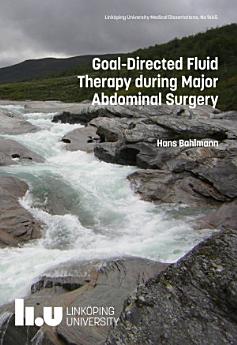Goal-directed fluid therapy during major abdominal surgery
About this ebook
Aim: To compare performance and clinical benefit of pleth variability index (PVI), a noninvasive, easy-to-use device for GDFT, with the reference method of oesophageal Doppler; to evaluate methods for measuring preoperative dehydration and its effect on fluid handling by the body; and to confirm the expected clinical benefits of GDFT in patients undergoing oesophageal resection, a high risk procedure.
Methods: In Studies I-III 150 patients scheduled for open abdominal surgery of at least 2 hrs were randomised to GDFT with either PVI or oesophageal Doppler. In the first half of the cohort, both monitors were connected to compare intraoperative performance. In 30 patients preoperative dehydration was analysed. In study IV 64 patients undergoing oesophageal resection were randomised to GDFT using pulse contour analysis or standard treatment.
Results: The concordance between PVI and oesophageal Doppler for indicating the need for and effect of a fluid bolus was low, and both had only limited capacity to predict the effect of a fluid bolus. Both methods resulted in comparable amounts of fluid being administered and similar clinical outcome. Preoperative dehydration was limited but did impact on fluid handling. Patients receiving GDFT during oesophageal resection received more fluid and more dobutamine compared to controls, but this did not result in any clinical benefit.
Conclusions: There are methodological issues as well as uncertainties about the clinical benefit of GDFT. We cannot recommend a strict application of any GDFT strategy, but suggest that its components should be incorporated in a more encompassing assessment of a patient’s fluid needs. The measurement, impact and treatment of preoperative dehydration need to be further clarified.




